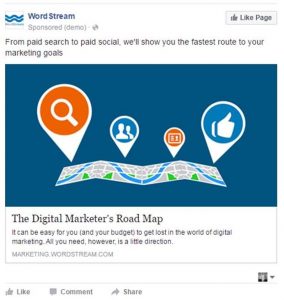Can technology help to create transparency and therefore restore trust in brands and agency partners? Columnist Carl Erik Kjærsgaard weighs in.

With 2016 coming to a close, it’s time for marketers to think about the past year. Was it the year we pushed our industry toward a better future, or just another year with minimal change?
As the year progressed, two key themes continued to drive the conversation throughout the industry: trust and transparency.
Where would we be without trust? Truly think about that for a moment. Customers need to be able to trust a brand before they are willing to engage, or the brand risks losing their business. And building trust is easier said than done; building and maintaining trust means ensuring that you’re being transparent with your clients and customers.
There were several news stories this year which affected the industry, some in a not-so-positive way. But we can take these events and look at them as teachable moments and lessons learned that will move our industry forward — they all touch on trust and transparency.
Start having those conversations on transparency
In the time since The Association of National Advertisers (ANA) released its report revealing executives had knowledge of nontransparent practices like rebates and kickbacks, the industry has slowly been coming to terms with a problem that has been lying dormant for years. The industry as a whole needs to change and move forward.
Most importantly, the ANA report showed a disconnect within the industry regarding the basic nature of the advertiser-agency relationship. There was no disclosure between the two sides, which greatly impacted the foundation of their trust in the relationship.
Rebuilding that trust starts with transparency. It’s having conversations that allow both sides to build a positive rapport to understand the capabilities and objectives of a campaign. It’s necessary to have better upfront conversations with consistent messaging and project updates regarding the campaign, so that both sides are aligned on costs, resources required and the benefits of utilizing technology.
Beyond the ANA reports, a major story following the United States’ presidential election has been around the issue of fake news. The controversy has caused doubt, and a lack of trust, between publishers and their advertisers.
But the reaction among tech giants, like Facebook and Google, has provided potential light at the end of tunnel. Both companies have announced measures aimed at preventing the spread of fake news. They’ve continued to release more information and are having more transparent conversations updating the media — and the public — on their status.
And that’s how we can begin to move forward. Companies can, and should, make this their practice when working with clients and customers. Reestablishing trust can’t happen unless the right, transparent conversations are happening.
New technology will bring trust back through transparency
Once a system of transparency is in place, there should be definitive actions aimed at re-establishing that lost trust; it’s the foundation of all relations. And this is especially true in advertising; but if you don’t trust your agency, you shouldn’t be working with them.
Emerging technologies — like machine learning, predictive analytics and artificial intelligence — may be the key to solving the trust issue. This technology is not new, but only recently has it been put into practice, and at an accelerated rate.
For the last few months, it seems that almost every tech giant has introduced research or acquired companies to increase their AI capabilities. And there’s a reason for all of this: the technology is at a point where it can solve problems better than humans can, across many domains, including marketing and advertising. It also provides us with an unbiased view of how the business or campaign is performing — and it can be done in real time.
I want to take a minute to reiterate how important that last sentence was. Removing biases is absolutely necessary to reestablish trust. In theory, a computer only knows numbers and algorithms, and it utilizes them to create its predictive outcomes.
When the computer presents its findings or shares its predictions, it’s doing so based on math. It’s completely and totally transparent. And if it gets anything wrong, you can just fix the equation to obtain the desired outcome — like high ROI on a media campaign.
The transparency from Google and Facebook has been welcomed, but it also highlights the fact that, while being transparent is the first step to gaining consumer trust, it is not the only step. My hope is that by unleashing the truth, we’ll see more trust in public perception and customer relationships.
We’ve seen over the course of the year that no one — not media agencies, publishers or tech giants — can avoid issues with trust. This is why they should be more transparent about how they operate their businesses. And it’s through new and emerging technology that businesses can become more open and innovative in how they work. We need to make 2017 the year where trust and transparency finally take center stage.
What are your thoughts? Join the conversation on social media.
Some opinions expressed in this article may be those of a guest author and not necessarily Marketing Land. Staff authors are listed here.
Marketing Land – Internet Marketing News, Strategies & Tips
(39)
Report Post






